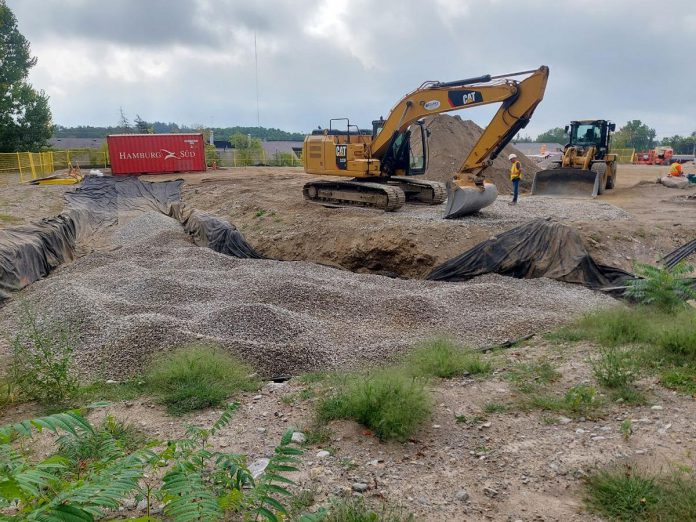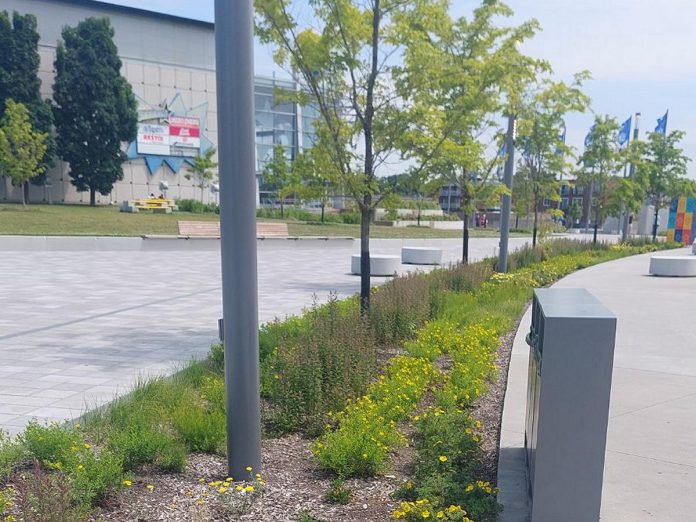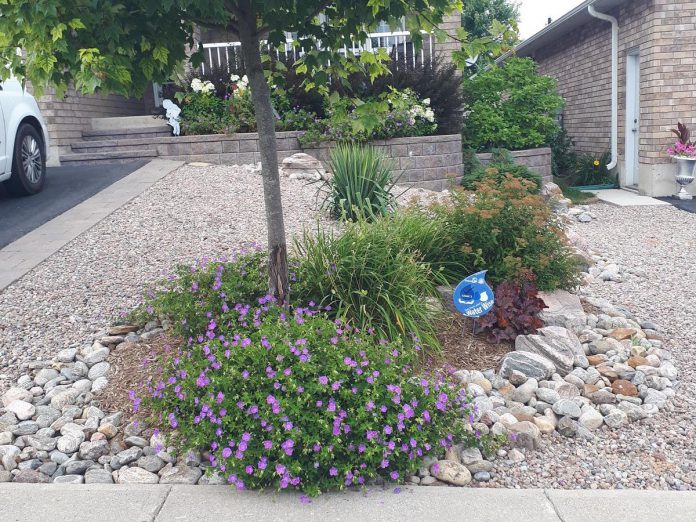
It’s not a secret that flooding is one of the greatest impacts that the Peterborough area feels from climate change. This is a result of the increased intensity of storms that are forecasted to occur as a result of increased moisture in the atmosphere.
When rainwater lands on a hard surface, such as a rooftop or asphalt, it will immediately run off into the closest stream or river. If too much water is allowed to enter a creek at the same time, it can overtop and cause flooding.
Recognizing this problem, when we build new buildings, subdivisions, or parking lots, we ask developers to make sure that they build in a way that will retain as much stormwater as close to where it lands as possible.
Worth considering is the impact that many stormwater management strategies have on our municipal carbon footprint and the surrounding environment.
In the past, the way that developers have accomplished their stormwater management requirements was to build a stormwater pond. You can see many of these ponds around the city — behind shopping malls, at the edge of subdivisions, or near parking lots.
These ponds are effective at controlling stormwater but require a great deal of concrete and gravel fill, and can even release methane gas from decomposing plant material in the pond. To build them and maintain them, they can release a great deal of carbon emissions.

Over the past decade, designers and regulators have started to embrace green stormwater facilities such as rain gardens, green roofs, or bioretention cells. These are smaller structures that can be spread more evenly throughout a development to capture water close to where it lands.
The change to “low-impact development” was prompted by the desire to decrease the negative impact of stormwater on water quality in lakes and rivers. A hidden benefit to these facilities can be the decreased carbon footprint as well.
Information on the carbon footprint of stormwater facilities is limited, but a review of what is available suggests that a stormwater pond can release as much as 108 kilograms of carbon dioxide per square metre over a period of 30 years. A green roof, on the other hand, releases on average of 42 kilograms of carbon dioxide per square metre — less than half of a stormwater pond.
The real climate hero, though, is the humble but mighty (and beautiful) rain garden. Some studies suggest that a rain garden is actually carbon negative, absorbing as much as 12.6 kilograms of carbon dioxide per square metre over a 30-year lifetime.
Considering this amazing news, companies or homeowners that are looking to decrease their carbon footprint can make a great start by constructing rain gardens on their property, while increasing their resiliency from flooding at the same time.
Due to the many benefits of rain gardens, the City of Peterborough offers subsidies for both commercial landowners and homeowners to install rain gardens on their property. If you ever need to build some stormwater management at your home or business, here’s just one more reason to go green. Green stormwater design is already great news for the environment, and this is just one more benefit to these amazing new ideas.

Dylan Radcliffe is a water resources technician with Engage Engineering, a Peterborough-based business and Green Economy Leader with GreenUP’s Green Economy Peterborough (GEP) hub.
GEP is for the business community. With membership, organizations commit to taking a comprehensive inventory of their greenhouse gas emissions, set reductions targets, and are coached towards achieving their own sustainability goals. To learn more, visit www.greeneconomypeterborough.ca.
GreenUP works with the City of Peterborough to provide eligible homeowners with educational resources and assistance in applying for the Rain Garden Subsidy, including on-site consultation and rain garden design. To learn more, visit greenup.on.ca/rain-garden-subsidy-program.


























